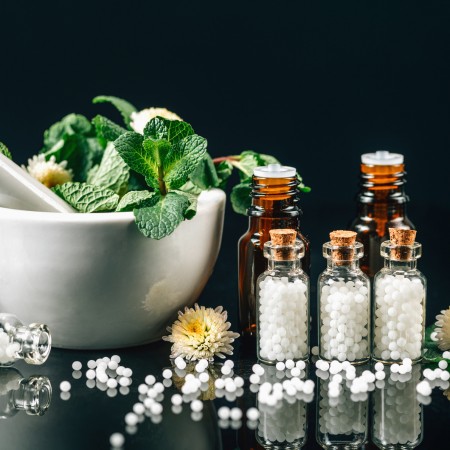Treatment
WHAT TREATMENT FOR IDIOPATHIC-HYPERSOMNIA (IH)?
Treatment for idiopathic hypersomnia (IH) primarily focuses on managing symptoms of excessive daytime sleepiness and sleep inertia, as there is currently no cure for the condition.
Medications
Several medications are used to treat idiopathic hypersomnia, including:
Lower-sodium oxybate (Xywav): This is the only medication specifically approved by the FDA for treating IH in adults. It promotes deep nighttime sleep, reduces daytime sleepiness and sleep inertia, and improves daily functioning. It contains calcium, magnesium, potassium, and sodium oxybates, with lower sodium content to reduce cardiovascular risks. It is taken at night and is available only through certified pharmacies due to potential risk of misuse.
Modafinil (Provigil) and Armodafinil (Nuvigil): These are stimulant wake-promoting agents commonly prescribed off-label for IH to help maintain wakefulness during the day. Side effects can include headache, nausea, dry mouth, dizziness, and appetite changes.
Psychostimulants such as methylphenidate and amphetamines may also be used to improve alertness, though tolerance and dependence require careful monitoring.
Other medications sometimes considered include:
Clarithromycin (an antibiotic) which may influence brain chemical signals related to sleepiness, though its use is still experimental.
Pitolisant (Wakix), a histamine H3 receptor antagonist/inverse agonist, is under study for IH treatment but is not widely used yet.
Antidepressants and sedatives may be prescribed depending on comorbid conditions.

Non-Pharmacologic Treatments and Lifestyle
Behavioral interventions such as maintaining a strict regular sleep schedule, avoiding alcohol and medications that impair sleep, and managing diet and exercise can help reduce symptoms.
Cognitive behavioral therapy for hypersomnia (CBT-H) is a specialized psychotherapy approach that may improve sleep quality and daily functioning when combined with medication.
Treatment of coexisting conditions like circadian rhythm disorders (with light therapy or melatonin) or sleep apnea (with PAP therapy) may also be necessary.
Summary
| Treatment Type | Examples/Details | Notes |
|---|---|---|
| FDA-Approved Medication | Lower-sodium oxybate (Xywav) | Only FDA-approved drug specifically for IH |
| Stimulant Wake-Promoting Agents | Modafinil, Armodafinil | Off-label use; improve daytime alertness |
| Psychostimulants | Methylphenidate, Amphetamines | Require monitoring for tolerance and dependence |
| Other Medications | Clarithromycin, Pitolisant, Antidepressants, Sedatives | Experimental or adjunctive use |
| Behavioral & Lifestyle Changes | Regular sleep schedule, avoid alcohol, diet, exercise | Important for symptom management |
| Psychotherapy | Cognitive behavioral therapy for hypersomnia (CBT-H) | May improve function alongside medications |
| Treatment of Comorbidities | Light therapy, melatonin, PAP therapy for sleep apnea | Address underlying or contributing sleep disorders |
This comprehensive approach combining medication, lifestyle modification, and supportive therapies aims to improve wakefulness, reduce sleepiness, and enhance quality of life for people with idiopathic hypersomnia.
Lifestyle Changes to Manage Idiopathic-Hypersomnia Symptoms
Several lifestyle changes can help manage idiopathic hypersomnia (IH) symptoms, although they may not completely eliminate excessive sleepiness. These adjustments can improve daily functioning, safety, and overall quality of life:
-
Maintain a consistent sleep schedule: Go to bed and wake up at the same times every day, even on weekends. This regularity can help stabilize your body’s sleep-wake rhythm.
-
Prioritize sufficient sleep: People with IH often need more than the typical 7–9 hours—sometimes 11 or more—to feel rested. Missing sleep can make symptoms worse.
-
Avoid late-night activities: Limit stimulating activities at night that can delay your bedtime, and avoid naps late in the day, as long naps can worsen grogginess and make it harder to wake up.
-
Limit caffeine and alcohol: Use caffeine only in the morning or early afternoon to avoid disrupting nighttime sleep. Alcohol can interfere with sleep quality and should be limited.
-
Meal planning: Some people with IH feel sleepier after large meals. Eating smaller, more frequent meals and planning them around nap times may help. Preparing easy meals in advance can also reduce fatigue from cooking.
-
Track your symptoms: Keeping a sleep diary or using tools like the Epworth Sleepiness Scale can help you and your doctor monitor changes and adjust your management plan.
-
Exercise and light exposure: Regular physical activity and getting natural light during the day can support alertness and improve sleep quality.
-
Work with a therapist or join a support group: Cognitive behavioral therapy for hypersomnia (CBT-H) and support groups can provide coping skills and emotional support.
-
Create a sleep-friendly environment: Make your bedroom dark, quiet, and cool to promote better sleep.
These lifestyle changes are most effective when combined with medical treatment and regular follow-up with a healthcare provider. While they may not eliminate all symptoms, they can help you better manage the challenges of idiopathic hypersomnia

